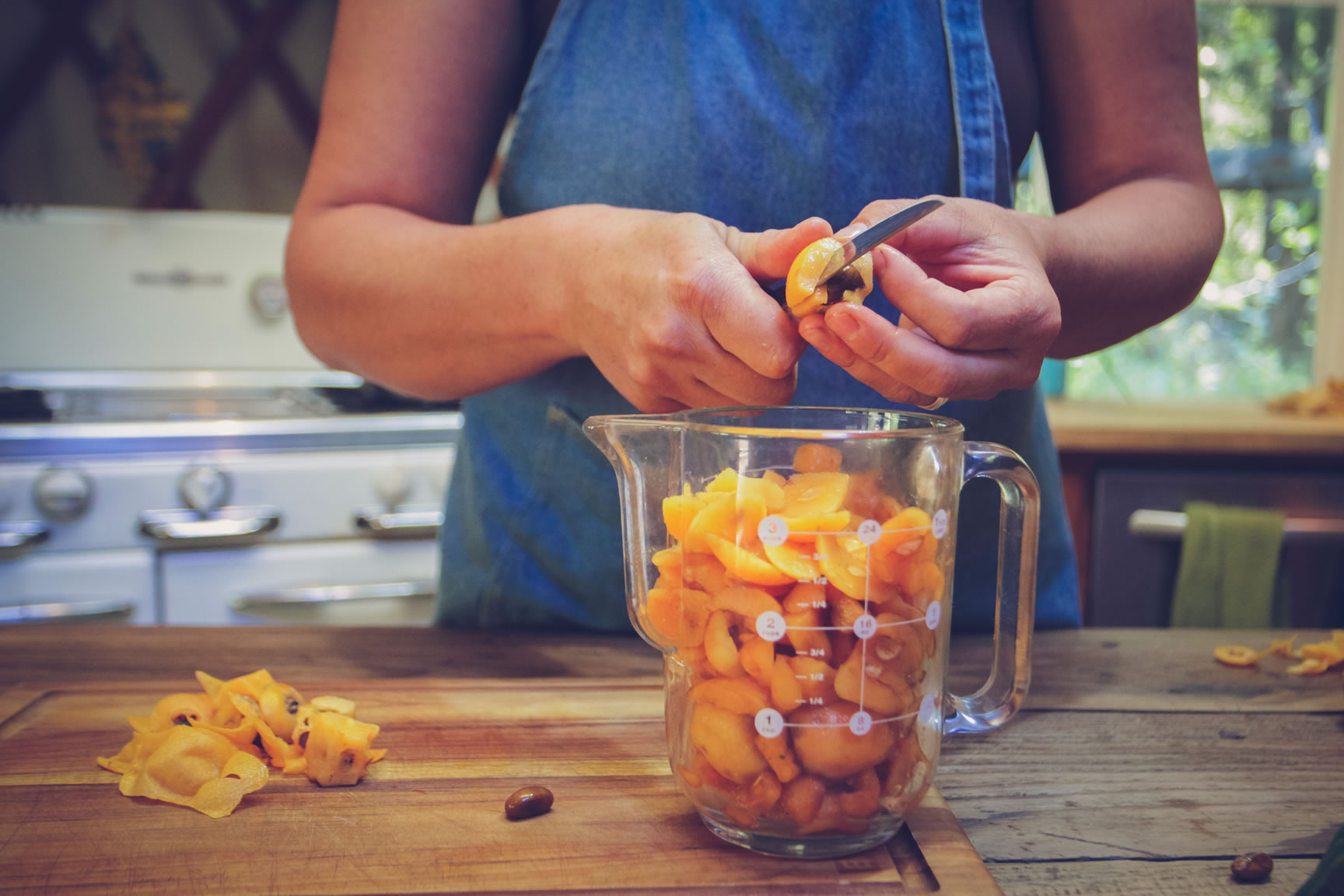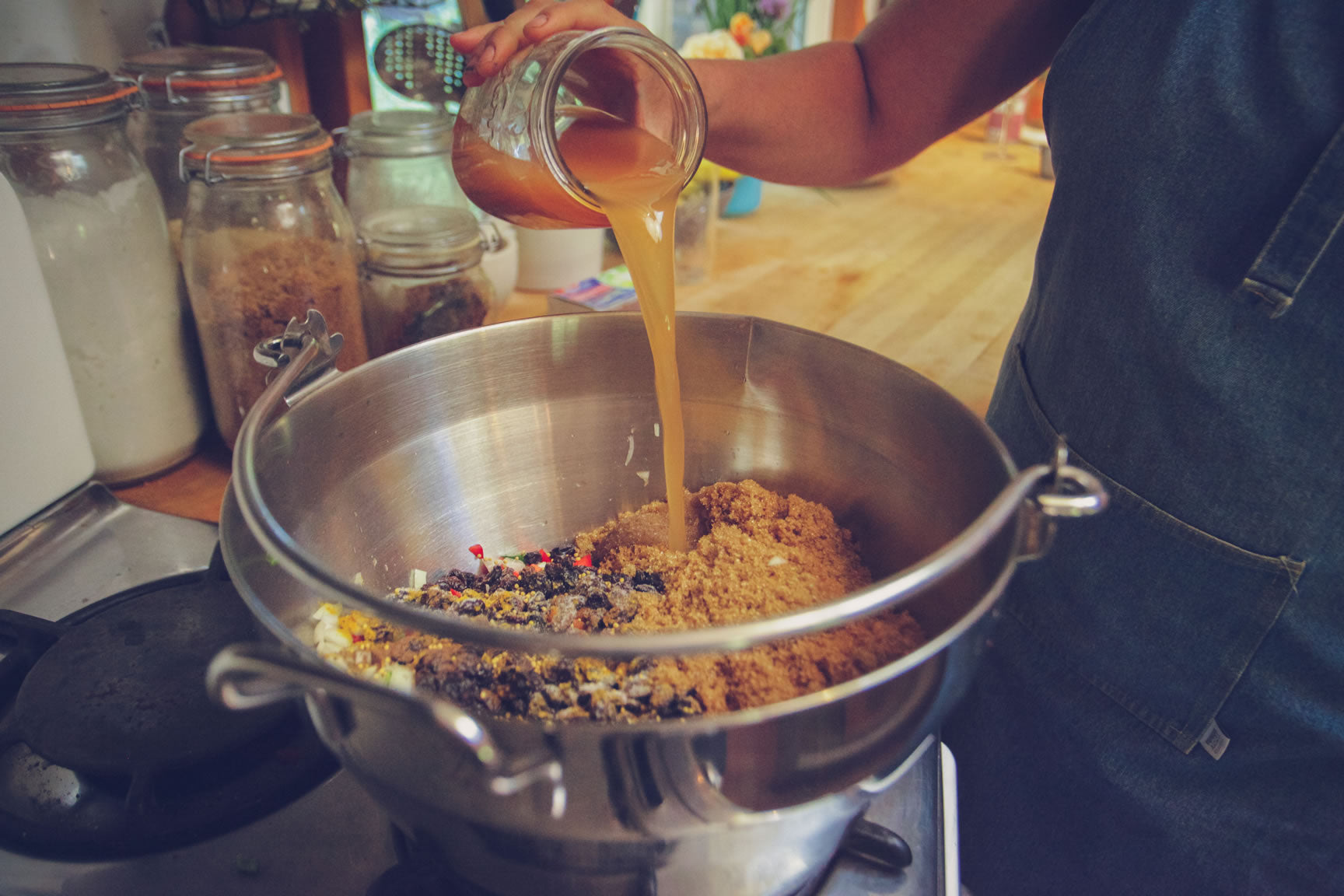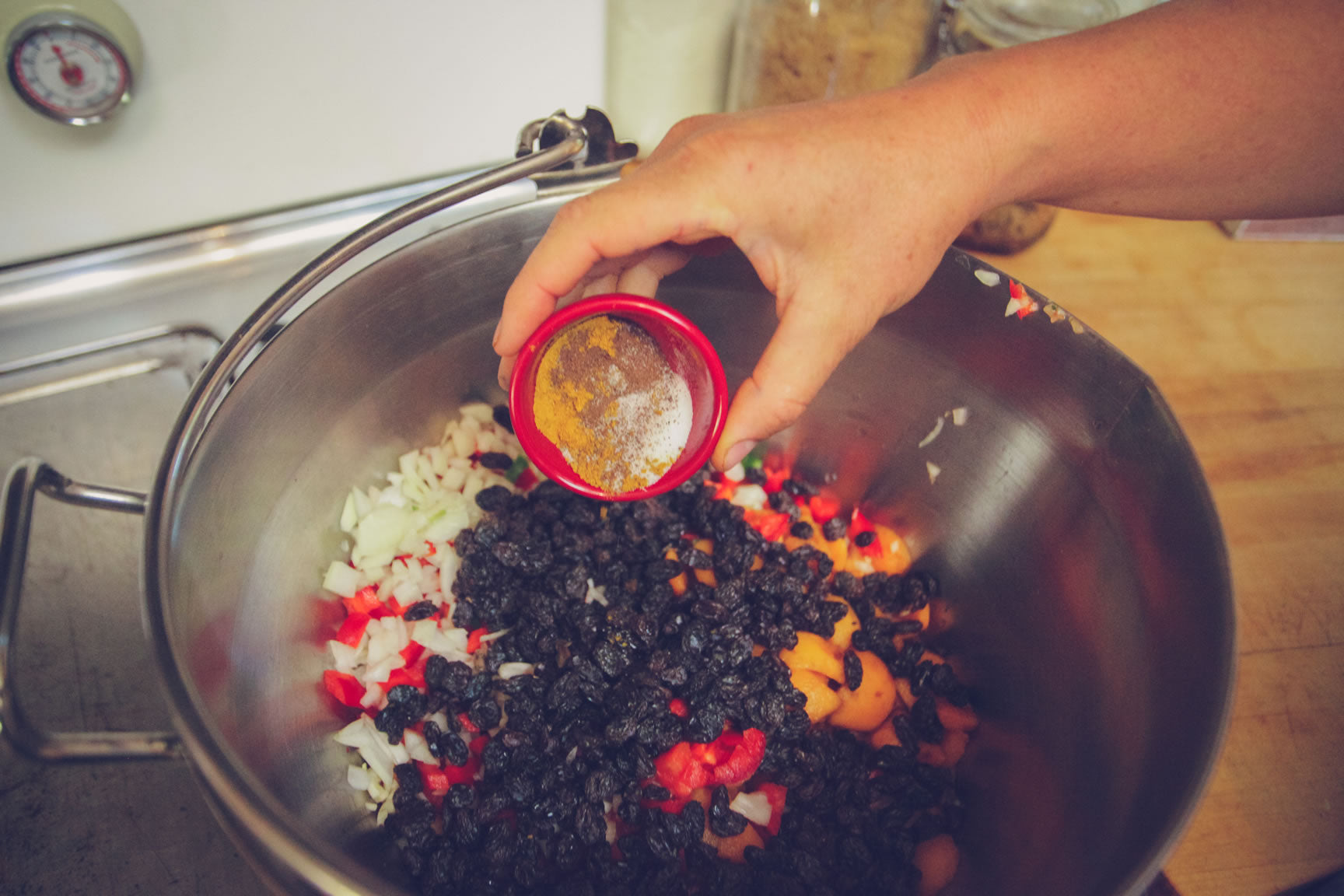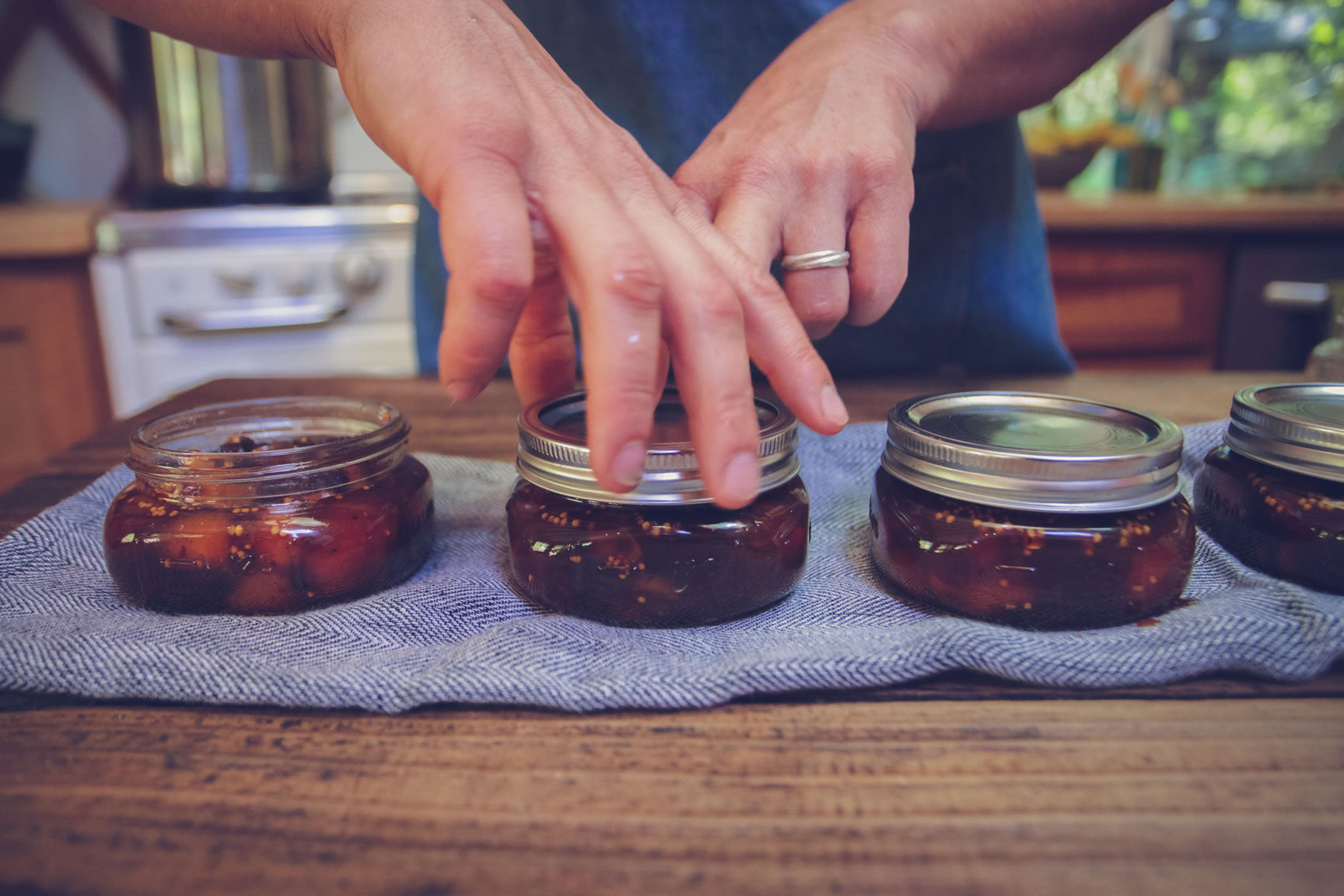- Continue Shopping
- Your Cart is Empty
Loquat Chutney

What You'll Need
Equipment
- measuring cups and spoons
- good kitchen knife and clean cutting surface
- water bath canner with rack
- canning tools
- 6 1/2 Pint canning jars
- stainless steel canning funnel
- canning ladle
- heavy bottomed pot or jam pan
Ingredients
- 5 cups chopped loquats
- 3 cups sugar
- 2 cups distilled white or cider vinegar, 5% acidity
- 2 cups raisins and/or dried cranberries
- 1 cup chopped onion (about 1 large onion)
- 1 cup chopped bell pepper (about 1 large bell pepper)
- 1-3 hot peppers, minced fine
- 2 garlic cloves
- 1 1/2 tablespoons mustard seed
- 1 tablespoon grated ginger
- 1 teaspoon pickling salt
- 1 teaspoon allspice
- 1 tablespoon curry powder
Chutney is a full-flavor condiment, imparting sweet and sour notes from fruits and vegetables, vinegar, spice, and sugar. Long, slow cooking deepens the spice flavors and creates a rich, thick consistency that mounds on a spoon. It’s a natural complement to a cheese board, paired with soft cheese and apples, and of course, it pairs well, too, with samosas, rice, and Indian dishes of all kinds. The base fruit can vary; we’ve seen recipes that call for everything from plums, to apples, peaches, pears and zucchini, to name just a few. It’s not the fruit that is the star, but the symphony of combined flavors that make it special. Still, we are particularly fond of this recipe for loquat chutney. Not only does it engage us with the adorably round, orange fruits and their slippery seeds, but the flavor, something between apple and apricot, adds its own unique element to the mix. The loquat is a common backyard fruit in these parts, and if you find a tree laden with these fruits, it’s easy to harvest enough to make a batch or two of this special chutney. The seeds are fat and slick, and they take up at least half of the fruit; harvest about twice as much as you think you’ll need for the recipe, and some extra to pop into your mouth along the way, while the pot simmers and the house fills with the smells of spices and soft fruit.
If you are not familiar with the water bath canning method watch our water bath canning video workshop. Always make sure you are following all safety guidelines outlined by the USDA when canning anything.
Directions
Prepare a water bath canner and 6 half-pint jars.Prepare the loquats. Slice away the stem and blossom ends, and peel the fuzzy skin from the flesh.
 Remove the seeds from the fruit, and peel away the membrane that surrounds the seed. Chop the fruit roughly and drop it into a measuring cup.
Remove the seeds from the fruit, and peel away the membrane that surrounds the seed. Chop the fruit roughly and drop it into a measuring cup.  Wash and chop the peppers. Peel, crush and mince the garlic. Chop the onion.
Wash and chop the peppers. Peel, crush and mince the garlic. Chop the onion.In a jam pot or heavy-bottomed saucepan, combine the loquats and the chopped vegetables.
 Pour the vinegar over the top, and add the spices.
Pour the vinegar over the top, and add the spices.
 Bring the mixture to a boil. Reduce heat to a simmer, and simmer until the mixture thickens to a consistency that mounds well on a spoon. Stir often to prevent sticking.
Bring the mixture to a boil. Reduce heat to a simmer, and simmer until the mixture thickens to a consistency that mounds well on a spoon. Stir often to prevent sticking. Ladle the hot chutney into the prepared jars, leaving 1/2” headspace. Remove air bubbles and clean the jar rims.
Ladle the hot chutney into the prepared jars, leaving 1/2” headspace. Remove air bubbles and clean the jar rims.  Secure the lids, and process in a boiling-water bath canner for 10 minutes.
Secure the lids, and process in a boiling-water bath canner for 10 minutes.Remove the jars from the water and let them cool. Check for proper seals. Store sealed jars at room temperature for 1 year. Store any unsealed jars in the refrigerator.

Serve with samosas, soft cheese, or any dish that needs a sweet, sour, and spicy complement. It’s epic on a cold turkey sandwich, too!
If you are not familiar with the water bath canning method watch our water bath canning video workshop. Always make sure you are following all safety guidelines outlined by the USDA when canning anything.
Over to You
It’s part of our mission here at Mountain Feed to help you make delicious, sustainable, homemade food more often. Stop by and say hello on Facebook, Twitter, Instagram or Pinterest. Or, as always, you can do it the old-fashioned way and come by the store to speak with one of our in-house experts.
